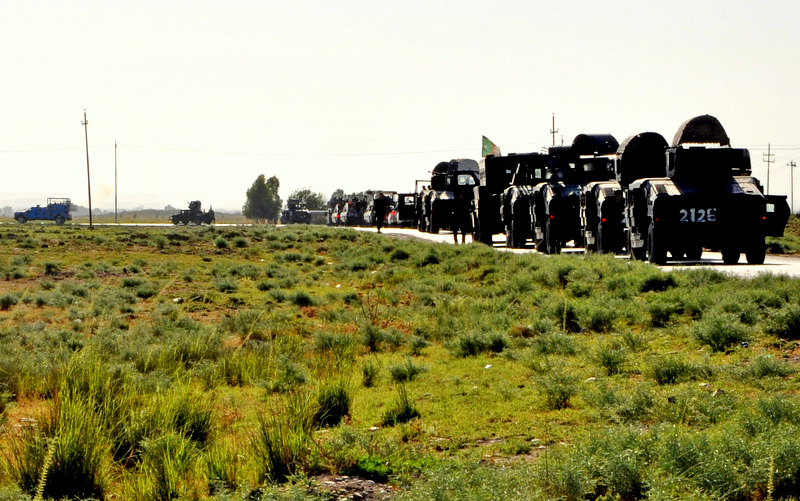
Antiwar.com has determined that at least 5,207 people were killed and 2,018 more were wounded during the month of July. Their analysis of the figures is below. Also, the Kurdish government is asking the U.S. government for weaponry, and the Mosul Brigades appears to be quickly gathering strength. If both groups gain reinforcements, it could mean higher figures for August.
July Casualty Analysis:
The casualty figures used to calculate these numbers were retrieved from various sources, including the Iraqi government. Of the 5,207 killed, 3,961 were militants. Those numbers are mostly reported by the Iraqi government, and there is no independent confirmation for a lot of these deaths. Because of that lack of verification, monthly tallies from other organizations have avoided including such figures.
That results in severe underreporting. Many militants are being killed, whether they are counted officially or not. In many cases, particularly with airstrikes deep in Islamic State territory, there is no concrete number given, just a report of “many deaths.” Those are not included in our tally.
Another issue with the death count is the apparent shortage of deaths among Iraqi soldiers and “volunteers” fighting along the front lines. Morgue officials in Najaf, where the largest cemetery in the world is located, have admitted that the number of bodies arriving for ritual washing and then burial has doubled to 60 per day. An exact figure of combat deaths was not available from them, but many are young militiamen. There is also an increase in the number of people being killed in Baghdad. Perhaps as many as five per day are being killed in underreported combat or sectarian violence there.
At least 2,018 people were also wounded. Considering that the Iraqi government and the Islamic State are both tight-lipped about their casualties, it is safe to assume that this figure is likely too low as well. It better reflects the injuries to civilians and police that occurred in bombings and other such attacks.
Underscoring the increasing difficulty in obtaining there figures and despite more troops fighting the Islamic State, these numbers are slightly lower than in June, when 5,456 were killed and 2,562 people were wounded.
Politics:
Kurdish Regional Government:
The Kurdish government has asked the United States for arms to use against the Islamic State. Such help is unlikely unless it is directed through Baghdad, which insists on remaining in control of Kurdistan’s foreign relations. The Maliki government is highly suspicious of the K.R.G. and would probably not allow weapons to reach the Kurds.
Kataeb al-Mosul:
Ninewa province’s governor, Atheel al-Nujaifi, hinted that the emergence of Kataeb al-Mosul (The Mosul Brigades) was planned for a later date, but the Islamic State’s destruction of beloved, historic sites forced their hand earlier than expected. No reason was given for the delay in fighting back against ISIS/DAASH, but it may have to do with the selection of a new prime minister.
Many believe that the Sunnis who originally welcomed the Islamic State would quickly turn against them should Prime Minister Nouri Maliki be tossed from office. They desire a fresh start with a new premier. The longer Iraq has no gains against the militants, the more likely that Maliki will lose his bid as incumbent.
However, the destruction of several shrines and mosques has energized the resistance, now. One of the many new recruits said he would like to call the Brigade the “Nabi Yunus Army” instead, in honor of the Prophet Yunus (known to Westerners as the Biblical figure Jonah). A shrine said to contain his tomb was destroyed a few days ago. Afterwards, residents openly defied the ISIS/DAASH by physically blocking the militants from reaching the Crooked Minaret.
Asa’ib ahl al-Haq:
Baquba police say that Shi’ite militiamen in Asa’ib ahl al-Haq are not killing Sunnis indiscriminately. They claim that the militiamen are using carefully crafted lists of Sunnis who are dangerous. The families of the men killed say otherwise.
Fighting:
In Tikrit, militants executed 17 people, including a police office. An air strike killed four militants. Gunmen killed two militants in separate shootings.
Militants staged an attack on Haditha. They began with mortar fire and three car bombs. Iraqi forces, including Sahwa members, were targeted and then fought in the counter attack. At least six security members were killed and 28 more were wounded. They managed to kill 31 militants.
Thirteen militants were killed when they attacked Duluiya; One policeman was killed and six others were wounded in the fighting.
Roadside bombs in Ishaqi killed four policemen and wounded 11 more.
One civilian was killed and seven more were wounded during air strikes on Hawija.
Gunmen killed four ISIS militants in al-Zuwiya.
In Meshahda, a bomb killed two security members and wounded three soldiers.
Ongoing shelling of Falluja left one civilian dead and three with injuries.
Attacks in Muqdadiya left two civilians dead and one injured.
In Arab Jabour, gunmen killed a Sahwa member and wounded his wife. Another source reported two dead Sahwas and three wounded, probably in the same attack.
in Ramadi, mortar fire wounded six civilians. Security forces killed 21 militants.
A woman was executed in Taza for cursing the Islamic State.
An unknown number of civilians were wounded in Zab, when militants launched a mortar attack.
Sixty militants were killed during an air strike on their headquarters at the Badush prison.
Air strikes killed 30 militants in Jurf al-Sakhar.
Twenty militants were killed in Albu Ridha.
In Albu Hassan, seven militants were killed.
Three militants were killed in Himreen.

